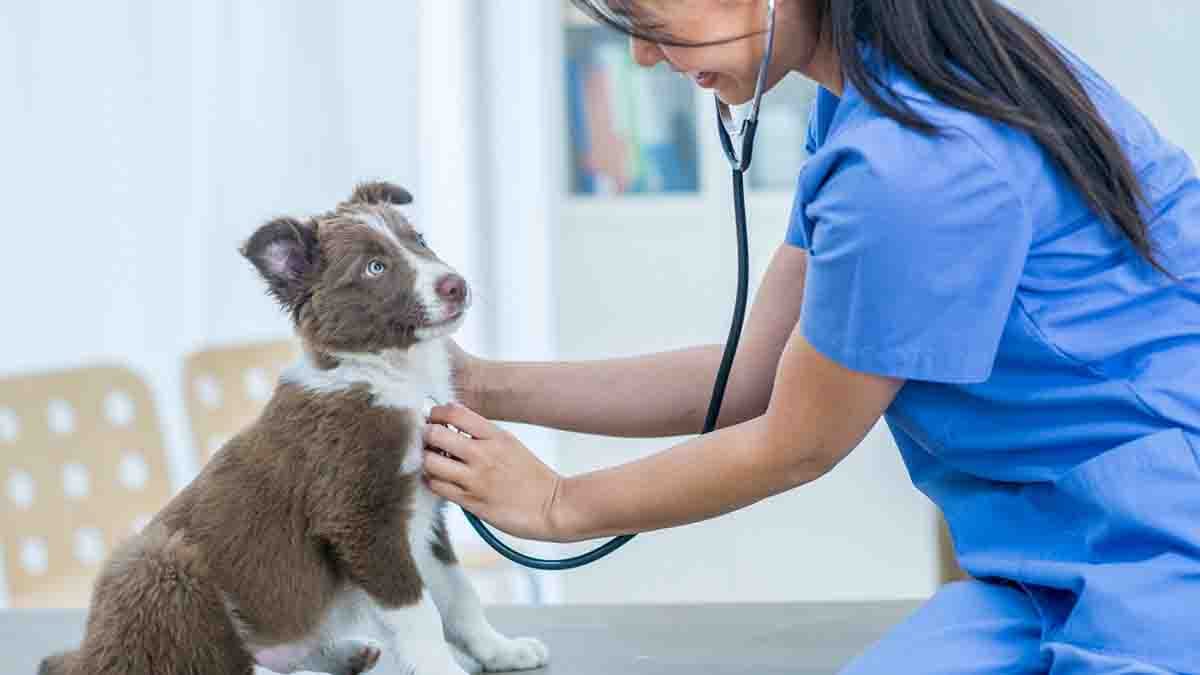Animal chiropractic care is gaining recognition as a valuable alternative therapy that can enhance the well-being of our furry companions.
If you have a passion for animals and a desire to help them live their best lives, becoming an animal chiropractor could be a rewarding career choice.
This article will explore the steps to embark on this specialized path and offer insights into the required education, training, and licensure.
Who is a Chiropractor?
A chiropractor is a healthcare professional specializing in diagnosing and treating conditions related to the musculoskeletal system, particularly the spine.
They use manual adjustment techniques (spinal manipulations) to restore proper alignment and function of the spine and other joints.
Chiropractors promote overall health and well-being by addressing issues such as back pain, neck pain, headaches, and other musculoskeletal disorders.
They often work with other healthcare providers to provide comprehensive and holistic care to their patients, emphasizing non-invasive and drug-free treatment options.
Who is an Animal Chiropractor?
An animal chiropractor is a specialized chiropractor who provides chiropractic care to animals.
Animal chiropractors undergo training and education tailored to work with animals, including domestic pets, horses, and other animals.
They apply similar techniques to those used by human chiropractors to identify and correct misalignments in the animal’s spine and joints.
By doing so, they aim to relieve pain, improve mobility, and enhance the overall well-being of animals.
Animal chiropractors often collaborate with veterinarians to offer complementary care options for animals, contributing to their overall health and quality of life.
Requirements needed to be an Animal Chiropractor
1. Educational Background
Aspiring animal chiropractors must hold either a Doctor of Chiropractic (DC) or a Doctor of Veterinary Medicine (DVM) degree from an accredited institution.
These degrees provide a solid foundation in the principles of chiropractic care and veterinary medicine, respectively.
2. Accredited Veterinary College
Choosing an accredited veterinary college is crucial to receive comprehensive education and training in animal chiropractic care.
Accredited institutions provide rigorous coursework and practical experiences that prepare students for the challenges of this specialized field.
3. Practical Skills Examination
Upon completing the required degree, candidates must pass an intensive practical skills examination.
This examination evaluates the candidates’ ability to perform animal chiropractic techniques safely and effectively.
It ensures that they possess the necessary skills to provide quality animal care.
4. State Licensure
To practice as an animal chiropractor, candidates must obtain a state license.
Licensure requirements vary by state but typically involve passing a state-specific examination and meeting specific criteria established by the state veterinary or chiropractic board.
5. Certification
Certification from reputable organizations, such as the American Veterinary Chiropractic Association (AVCA), is highly recommended.
AVCA offers certification exams to evaluate the competency of animal chiropractors.
This certification demonstrates expertise and commitment to maintaining high standards in the field.
Skills needed to be an Animal Chiropractor
In addition to the educational requirements, several essential skills and qualities are crucial for animal chiropractors:
1. Knowledge of Animal Anatomy
A strong foundation in animal anatomy is crucial for identifying and addressing animal musculoskeletal issues.
Understanding different animal species’ skeletal structures, nervous systems, and biomechanics is essential for effective treatment.
2. Chiropractic Expertise
A comprehensive understanding of chiropractic techniques and principles is vital.
This includes knowledge of spinal manipulation, joint mobilization, soft tissue therapies, and other chiropractic modalities adapted explicitly for animals.
3. Observation and Assessment Skills
Animal chiropractors must possess excellent observation skills to identify subtle changes in an animal’s posture, movement, and behavior.
Assessing and diagnosing musculoskeletal conditions accurately is essential for developing effective treatment plans.
4. Communication and Interpersonal Skills
Effective communication with both animal owners and veterinary professionals is essential.
Animal chiropractors must be able to explain treatment plans, progress, and recommendations clearly, and establish trust and rapport with clients.
5. Patience and Empathy
Working with animals requires patience and empathy.
Animal chiropractors must be able to handle animals with care and understand their individual needs.
A calm and reassuring demeanor helps create a positive and stress-free environment for animals and their owners.
6. Continuous Learning and Professional Development
Animal chiropractic is constantly evolving, and staying updated on the latest research and techniques is crucial.
Animal chiropractors should be committed to ongoing education and professional development to provide the best care for their animal patients.
What does an Animal Chiropractor do?
An animal chiropractor is a specialized healthcare professional focusing on diagnosing, treating, and preventing musculoskeletal disorders in animals.
Their primary goal is to restore proper alignment and function of the animal’s spine and other joints to promote overall wellness.
Here are some key responsibilities and tasks of an animal chiropractor:
1. Assessment and Evaluation
Animal chiropractors assess the animal’s posture, gait, and overall movement patterns.
They also review the animal’s medical history and perform physical examinations to identify areas of concern or dysfunction.
2. Manual Adjustments
Using their hands or specialized tools, animal chiropractors apply gentle and precise manual adjustments to specific areas of the animal’s spine or joints.
These adjustments help restore joint mobility, relieve pain, and improve overall body function.
3. Muscle and Soft Tissue Work
In addition to spinal adjustments, animal chiropractors may employ various soft tissue techniques such as massage, stretching, and myofascial release.
These techniques help relax tense muscles, reduce inflammation, and improve range of motion.
4. Collaborative Care
Animal chiropractors often work alongside veterinarians and other animal healthcare professionals.
They communicate and collaborate to ensure a comprehensive and integrated approach to the animal’s health and well-being.
5. Education and Preventive Care
Animal chiropractors educate owners about proper posture, exercise, and nutrition to support their pet’s musculoskeletal health.
They may provide guidance on home exercises and lifestyle modifications to promote long-term wellness and prevent future injuries.
Where does an Animal Chiropractor work?
Animal chiropractors work in various settings, providing their specialized services to a wide range of animals.
Here are some common environments where animal chiropractors work:
1. Private Practices
Many animal chiropractors establish their own private practices.
These clinics are dedicated solely to animal chiropractic care, offering services specifically tailored to address musculoskeletal issues in animals.
Private practices allow chiropractors to create a comfortable and welcoming environment for animals and owners, providing personalized care and building long-term client relationships.
2. Veterinary Clinics/Hospitals
Animal chiropractors often collaborate with veterinarians and work within veterinary clinics or hospitals.
This collaboration allows for an integrative approach to animal healthcare, combining traditional veterinary medicine with chiropractic therapy.
Animal chiropractors in these settings may be part of a larger team, working alongside veterinarians, veterinary technicians, and other professionals to provide comprehensive animal care.
3. Animal Rehabilitation Centers
Animal chiropractors can also be found in animal rehabilitation centers.
These centers focus on providing physical therapy, rehabilitation, and alternative therapies to animals recovering from injuries or surgeries.
Animal chiropractic care is often integrated into the overall treatment plan to support the animal’s recovery, enhance mobility, and reduce pain.
4. Equestrian Facilities
Equine chiropractors specialize in providing chiropractic care to horses.
They can work in equestrian facilities such as horse farms, stables, and equestrian centers.
These professionals cater specifically to the needs of horses, addressing musculoskeletal issues and optimizing their performance.
Equine chiropractors often work closely with trainers, riders, and other equine professionals to support the overall well-being of the horses.
FAQs on How To Become An Animal Chiropractor
An average chiropractic session can range from $30 to $200. However, it’s important to note that some insurance plans may cover some of the costs, reducing out-of-pocket expenses for patients. It is advisable to consult with your chosen chiropractor and your insurance provider to get a more accurate estimate of the costs involved.
While several countries provide excellent opportunities for chiropractors, the United States is one of the top destinations for chiropractic professionals. With a well-established chiropractic industry, a large population, and growing demand for holistic healthcare, the US offers a favorable environment for chiropractors to thrive. Other countries known for flourishing chiropractic sectors include Canada, Australia, and the United Kingdom. These countries boast robust healthcare systems, supportive regulations, and a high level of recognition for chiropractic as a complementary therapy.
Chiropractic school in the United States typically requires completing a Doctor of Chiropractic (DC) program, which takes around four years. The program consists of rigorous coursework and hands-on clinical training. Students focus on foundational science courses such as anatomy, physiology, and biochemistry during the first two years. The remaining two years are dedicated to advanced chiropractic courses, clinical internships, and practical experience to prepare students for their future careers as chiropractors. After graduation, aspiring chiropractors must also pass the national licensing examination to practice in the United States.
Life University, located in Marietta, Georgia, is renowned as the largest chiropractic school in the United States. The university offers a comprehensive curriculum, state-of-the-art facilities, and numerous opportunities for students to gain hands-on experience through clinical rotations and internships.
Conclusion
Becoming an animal chiropractor requires dedication, perseverance, and a genuine love for animals.
By following the outlined steps of pursuing the appropriate education, obtaining practical experience, and acquiring the necessary certifications, you can build a solid foundation for a successful career in this field.
As the demand for holistic animal care continues to rise, animal chiropractors play a vital role in enhancing the well-being of our beloved pets and animals.
Take the first step towards this rewarding profession and become an animal chiropractor.
Awesome one; I hope this article answers your question.
Editor’s Recommendations:
- What is RA Certification? How to Get it (Benefits, FAQs)
- Can Nurses Do Stitches? (Yes/No, Who Can, Training, FAQs)
- What is 19A Certification? How to Get (Steps, Renew, FAQs)
- How Long Does it Take to Get a Lifeguard Certified? (FAQs)
- Is GoodRx Legit or a Scam? (Yes/No, Cost, FAQs)
If you find this article good, please share it with a friend.





